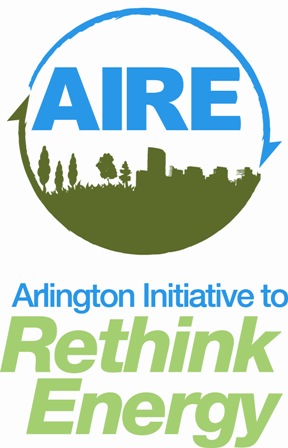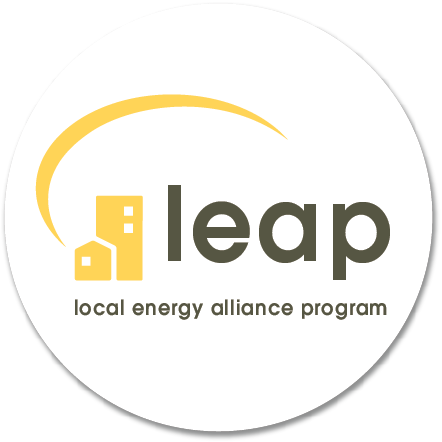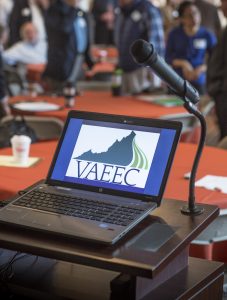 Our November 12th member meeting was the most well attended meeting for the VAEEC to date, and those 110+ attendees were treated to a packed room and packed agenda. It was a great starting point for me as the new Executive Director of the VAEEC, and I hope that those in attendance enjoyed the diverse speaking topics as much as I did. (If you attended the meeting and would like to share your feedback, we’ve got a brief survey up online.)
Our November 12th member meeting was the most well attended meeting for the VAEEC to date, and those 110+ attendees were treated to a packed room and packed agenda. It was a great starting point for me as the new Executive Director of the VAEEC, and I hope that those in attendance enjoyed the diverse speaking topics as much as I did. (If you attended the meeting and would like to share your feedback, we’ve got a brief survey up online.)
Here’s my synopsis of the meeting, and you can download all of the presentations on the Resources page):
After our board chair, Cynthia Adams with Pearl Certification, did the welcome and introduced me, I laid out my vision for the next 12+ months for the VAEEC. In preparation for the meeting, I had spoken with all of my board members and during those conversations three common ideas emerged as top priorities for us:
- The Council should be a trusted source of information for decision makers, businesses or anyone interested in energy efficiency policy and innovation. We’re already well on its way with this objective through our work with the Governor’s Executive Committee on energy efficiency.
- More networking. To that end, we will be announcing some exciting new opportunities in the future so stay tuned.
- More member resources. Building off our monthly e-newsletter, we will be providing more original content as well as other resources for our members in the coming months.
This is just the beginning. I also want to hear from you, our members, on ways we can help you be successful in the energy efficiency space. To that end, we will be sending out a member survey at the beginning of the new year so be on the lookout for it.
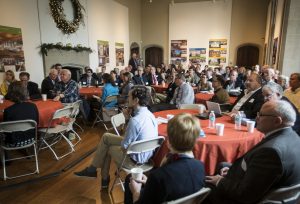 Our first speaker was Dr. Bob Holsworth with DecideSmart, who discussed the impacts of recent election results on Virginia’s energy efficient future, which, according to Dr. Holsworth, will have zero impact since the elections kept the House and Senate divided in the same ratio as before.
Our first speaker was Dr. Bob Holsworth with DecideSmart, who discussed the impacts of recent election results on Virginia’s energy efficient future, which, according to Dr. Holsworth, will have zero impact since the elections kept the House and Senate divided in the same ratio as before.
Next was Mike Dowd with the Department of Environmental Quality who gave an update on the EPA’s Clean Power Plan. Mike’s presentation was full of details such as how the draft and final rule differed; how Virginia’s comments to the EPA were addressed; various pathways to compliance, and the timeline moving forward. This is definitely worth checking out and is available on our Resources page.
Hayes Framme with the Office of Governor McAuliffe was our next presenter who gave a brief update on the Governor’s Executive Committee on Energy Efficiency (GEC). Four of the VAEEC’s board members sit on the GEC and the Council is a partner of the Department of Mines, Minerals and Energy, the state agency who provides staffing to the GEC, to work on some of the key components of the GEC work plan. Our work with the GEC is just getting started so expect to see more updates about the GEC at our spring meeting as well.
After the GEC update, we held our member spotlight presentation on Arlington County. John Morrill, a VAEEC board member representing Arlington County, gave a brief update on their program with a few highlights, including their highly successful LED program.
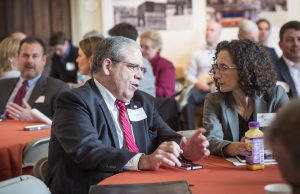 After lunch, VAEEC board member Marisa Uchin with Opower presented on energy efficiency policies and programs taking place in New York and California. Hurricane Sandy was a wake up call to decision-makers in NY on just how vulnerable their energy system is to natural disasters. As stated in Marisa’s presentation, Reforming the Energy Vision is a “comprehensive reform aimed at reorienting the electric industry and ratemaking paradigm toward a customer-centric approach, and one that uses distributed energy resources (DER) as a primary tool in the planning and operation of efficient and resilient electric distribution systems.”
After lunch, VAEEC board member Marisa Uchin with Opower presented on energy efficiency policies and programs taking place in New York and California. Hurricane Sandy was a wake up call to decision-makers in NY on just how vulnerable their energy system is to natural disasters. As stated in Marisa’s presentation, Reforming the Energy Vision is a “comprehensive reform aimed at reorienting the electric industry and ratemaking paradigm toward a customer-centric approach, and one that uses distributed energy resources (DER) as a primary tool in the planning and operation of efficient and resilient electric distribution systems.”
Next up Mary Shoemaker with American Council for an Energy-Efficient Economy presented ACEEE’s new scorecard and highlighted how Virginia compares to its neighbors, which unfortunately, isn’t favorable.
After the ACEEE presentation, we held a “lightning round” for utility updates. Dominion and Appalachian Power both gave brief updates on their low-income energy efficiency programs. In the future, we would like to extend an invitation for all of our members to briefly highlight their work in this format so please come prepared to brag at the spring meeting!
Our final speaker of the day was VAEEC board member Bill Greenleaf with Virginia Community Capital who walked us through the new Virginia SAVES program and the new PACE loan program for commercial customers, thanks to recent legislation passed in the 2015 General Assembly session. The VA SAVES program is an interest rate subsidy program that utilizes Virginia’s allocation of federal qualified energy conservation bonds. This program is open to local governments and the private sector and is capped at $20 million. PACE (Property Assessed Clean Energy) is a loan program for energy efficiency, renewable energy and water efficiency projects. The loans, provided by private lenders, are repaid on the commercial real estate tax bill and stay with property upon resale.
As you can tell, we had a very productive and informative meeting. We’re already underway planning for the spring meeting and we hope you can join us then.
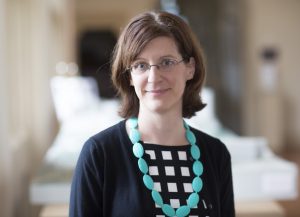
The author and VAEEC’s new Executive Director, Chelsea Harnish.
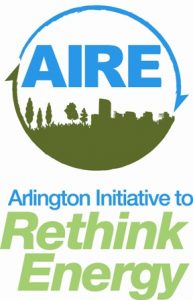 Arlington County government joined VAEEC in 2014. The Arlington Initiative to Rethink Energy (AIRE) helps our community make smart decisions about energy and supports individual actions that improve and sustain Arlington’s quality of life. Through rethinking energy, we are committed to energy practices that will make Arlington County a more prosperous, healthful, safe and secure place to live, work and play. Come join us.
Arlington County government joined VAEEC in 2014. The Arlington Initiative to Rethink Energy (AIRE) helps our community make smart decisions about energy and supports individual actions that improve and sustain Arlington’s quality of life. Through rethinking energy, we are committed to energy practices that will make Arlington County a more prosperous, healthful, safe and secure place to live, work and play. Come join us.
October 27, 2015 — The VAEEC is pleased to welcome Chelsea Harnish as Executive Director. She takes the helm on November 2. Members and other stakeholders are invited to meet Chelsea at the VAEEC meeting on November 12.
Chelsea brings an extensive network of contacts working on clean energy and energy efficiency in the Commonwealth, a rich history of engaging with state agency staff, industry and utility representatives, and a decade’s experience in energy policy and the nonprofit sector.
 She comes to the VAEEC from the Virginia Conservation Network where she helped partners working on climate and energy issues strategically plan their approaches to achieving their collective goals. She also served as the Virginia Policy Coordinator for the Chesapeake Climate Action Network and played a variety of roles with a small nonprofit on Cape Cod in Massachusetts advocating for the Cape Wind project, America’s first announced offshore wind project.
She comes to the VAEEC from the Virginia Conservation Network where she helped partners working on climate and energy issues strategically plan their approaches to achieving their collective goals. She also served as the Virginia Policy Coordinator for the Chesapeake Climate Action Network and played a variety of roles with a small nonprofit on Cape Cod in Massachusetts advocating for the Cape Wind project, America’s first announced offshore wind project.
“I look forward to continuing to work in the energy sector in this new capacity,” said Chelsea. “Energy efficiency is a vital component to energy policy discussions and the Virginia Energy Efficiency Council plays a crucial role in supporting programs and policies that advance energy efficiency in Virginia.”
“As Virginia develops plans for federal Clean Power Plan compliance and meeting the state’s voluntary energy efficiency goal, the energy efficiency industry is poised to take center stage. It’s a crucial moment for the businesses, local and state government, and utilities we represent. Chelsea has the experience and expertise to position the VAEEC and its members at the forefront of this opportunity,” said Cynthia Adams, VAEEC Governance Board Chair.
We’re back with another installment of our popular biannual VAEEC meetings, offering you the opportunity to network with other leaders in the energy efficiency field, get informed and timely updates on issues critical to the industry in the Commonwealth, and help chart the course for the VAEEC.
Working Agenda:
10:15 Welcome and Introduction of new Executive Director (Cynthia Adams, VAEEC Governance Board Chair)
10:25 Report from Governor’s Executive Committee on Energy Efficiency (Hayes Framme, Chief Energy Efficiency Officer)
10:45 Update on the Clean Power Plan (Mike Dowd, Department of Environmental Quality)
11:05 The Impact of Recent Election Results for Virginia’s Energy Future (Invited: Political Commentator Dr. Bob Holsworth)
11:35 Member Spotlight (John Morrill, Arlington County)
12:00 Lunch
12:30 Innovation from Outside the State (Marisa Uchin, Opower)
12:50 Briefing on American Council for an Energy Efficient Economy’s State Scorecard (Mary Shoemaker, ACEEE)
1:05 “Lightning Round” (Utility representatives)
1:25 Commercial PACE and the VA Saves Green Community Loan Program (Bill Greenleaf, Virginia Community Capital)
1:45 Discussion: How will VAEEC Participate in Governor’s Executive Committee Process?
1:55 Wrap up
Register Now!
Lunch will be served, courtesy of our sponsor Community Housing Partners.
Please note the Branch Museum of Architecture and Design in Richmond is a different location than recent meetings. The meeting space is generously sponsored by D&R International.
The meeting is free and open to all. Non-VAEEC members are asked to make a small donation. We encourage you to invite friends and colleagues.
Please feel free to contact us with any questions about the meeting, and we look forward to seeing you on November 12.
 In case you missed it, in early September Governor McAuliffe announced the VirginiaSAVES Green Community Program, a loan program created to lower financing costs for energy efficiency, renewable energy generation and alternative fuel projects. This low-cost financing tool is available to local government, institutional and commercial and industrial entities in the Commonwealth and is funded through $20 million in federally-allocated Qualified Energy Conservation Bonds (QECBs).
In case you missed it, in early September Governor McAuliffe announced the VirginiaSAVES Green Community Program, a loan program created to lower financing costs for energy efficiency, renewable energy generation and alternative fuel projects. This low-cost financing tool is available to local government, institutional and commercial and industrial entities in the Commonwealth and is funded through $20 million in federally-allocated Qualified Energy Conservation Bonds (QECBs).
Governor McAuliffe: “As stated in my Energy Plan, providing the public and private sectors with the tools they need to reduce energy consumption and save on energy costs is critical for building a new Virginia economy. VirginiaSAVES encourages investments that will save money, improve energy security, lessen Virginia’s dependence on federal spending and attract new jobs and advanced energy industries.”
See sample numbers for a $2M loan. And here is a program overview from Virginia Community Capital.
Developed by the Division of Energy of the Virginia Department of Mines, Minerals and Energy, VirginiaSAVES (which stands for Sustainable and Verifiable Energy Savings) is administered by Clean Source Capital and Abundant Power Group.
Visit the VirginiaSAVES website for more information, borrower eligibility and project selection criteria, service provider registration forms and other program documents and information.
The Virginia Department of Environmental Quality (DEQ) is in the middle of a series of informal listening sessions on the U.S. Environmental Protection Agency (EPA) Clean Power Plan to cut carbon emissions (greenhouse gases) from existing power plants that generate electricity from fossil fuels.
The following remarks will be delivered at the Fairfax session tonight by the Chair of VAEEC’s Governance Board; similar remarks have been and will be delivered by Governance Board members at other session. There are three remaining sessions (September 30, 2015, Henrico, VA; October 1, 2015, Big Stone Gap, VA; October 6, 2015, Portsmouth, VA).
“I’m Cynthia Adams, and I am Chair of the Virginia Energy Efficiency Council. I’ve also been appointed by Governor McAuliffe to the Virginia Energy Council and to the Governor’s Executive Committee on Energy Efficiency. In my professional life I’m the co-founder of a business which focuses the residential energy efficiency market. So from all of these perspectives, I am here tonight to advocate for energy efficiency having a central role in Virginia’s Clean Power Plan Compliance.
The Clean Power Plan affords Virginia an opportunity to make sensible energy decisions now that will benefit the Commonwealth for generations to come.
Energy efficiency is one of the primary tools available to help states meet their targets, and when approached from a performance-based perspective can be counted on to lower carbon emissions.
Energy efficiency is the least expensive resource option to meet our energy supply needs. Plus it saves consumers money with lower energy bills.
Energy efficiency is the cleanest option as it represents energy that doesn’t have to be created or consumed, and its implementation reduces multiple pollutants created by other fossil fuel sources.
Energy efficiency is the safest, most reliable option because through demand reduction it improves our energy security by reducing risk and increasing reliability.
Energy efficiency promotes local economic development and job creation. A recent industry census by the Virginia Energy Efficiency Council documented a $2.2 billion energy efficiency industry in Virginia. This industry supports at least 13,000 jobs at more than 500 firms.
The American Council for an Energy Efficient Economy has found that for every $1M spent in building efficiency improvements, 20 jobs are supported. And for every $1M in avoided consumer energy costs, another 17 jobs are supported.
The Virginia Energy Efficiency Council strongly encourages Virginia to include a robust role for energy efficiency in its compliance plan as a way to meet federal guidelines while generating significant economic and environmental benefits for our fellow citizens.
We strongly advocate for a role for the private market to play in helping the state meet its goal, and we stand at the ready to be a resource to the DEQ should the agency have a need.”
At the end of August, VAEEC Executive Director Ken Rosenfeld will be stepping down to pursue other opportunities. We would like to thank Ken for his leadership over the past year and a half as we hosted our largest-yet meetings, grew our membership of industry leaders and ensured that energy efficiency was front and center in discussions about Virginia’s energy future. As we wish Ken the best in his next endeavors, the VAEEC Governance Board asks your help as we hire a new Executive Director to take the helm and work with us to make the VAEEC an even stronger organization.
Please share the job description with your networks. Resumes accepted through August 31.
VAEEC Executive Director Job Description
Cynthia Adams, VAEEC Governance Board Chair
by Ken Rosenfeld, Executive Director
There’s been growing momentum in the past few years for energy efficiency, along with a mounting wave of evidence related to its benefits and its potential. Perhaps that’s why it’s headline-inducing when a piece of news goes in the other direction. That was the case earlier this summer when an economics research paper was released by the University of Chicago. It asked in its title, “Do Energy Efficiency Investments Deliver?” and the report responded with a conclusion that the costs outweigh the benefits.
I hesitate to even mention this paper and bring any additional attention to it, as the research has been quickly, thoroughly and appropriately debunked. But at the same time, it serves as a worthwhile reminder that, despite all of the evidence in support of efficiency programs, we still need to continue making the argument that EE benefits are real.
The paper has clear shortcomings, with a number of questionable assumptions including how to measure costs, what should be included as benefits, and which populations are targeted. The primary danger is that this analysis of one program (the Weatherization Assistance Program) in one state (Michigan) could lead to far-reaching, negative conclusions on EE more broadly.
A number of highly-regarded organizations responded, representing a variety of perspectives, and these blog posts are worth a read:
We’re on the cusp of an energy efficiency moment in the U.S., and that’s particularly the case in Virginia where in just the last year we’ve seen:
- Governor McAuliffe’s formation of a committee to address the state‘s longstanding goal of reducing energy use by 10%;
- The appointment of the country’s first state-level chief energy efficiency officer;
- Bipartisan passage of Property Assessed Clean Energy (PACE) financing legislation; and
- Continued growth of the VAEEC’s membership and the energy efficiency industry – the latest VAEEC census reveals a $2.2 billion EE industry in Virginia supporting more than 13,000 jobs.
However, we haven’t reached the point where we can assume that everyone recognizes the value of energy efficiency, and we have to continue to build this consensus in order to turn the promise of EE into reality. This one research paper may have its faults – and it does — but it has served as a useful call to action.
Monday, August 3, 2015
This afternoon, the U.S. Environmental Protection Agency released its long-anticipated final rule on the Clean Power Plan (CPP), a federal initiative for curbing greenhouse gas emissions from power plants. The CPP calls for a significant reduction in carbon emission from the nation’s power sector – a 32 percent reduction below 2005 levels by 2030. The CPP sets state-by-state targets for emission reductions and allows states to develop their own compliance plans. Details can be found here.
Statement by Ken Rosenfeld, executive director of the Virginia Energy Efficiency Council:
“After much anticipation, the Clean Power Plan is here and the Virginia Energy Efficiency Council (VAEEC) recognizes this as an opportunity to plan for the future and make sensible energy decisions.
While the Clean Power Plan has generated plenty of debate, it’s time now for Virginia to prepare a comprehensive strategy to address the plan’s goals. To that end, the VAEEC strongly encourages Virginia to include a robust role for energy efficiency in its compliance plan. Energy efficiency can help meet the federal guidelines while concurrently generating significant economic and environmental benefits for Virginians.
There are a few specific items in the final rule that deserve particular mention:
- Energy efficiency is no longer specified as a “building block” – a category used by the EPA to calculate the emissions reduction targets. This is a technical change that was reportedly made to address legal concerns, but it’s important to note that it does not affect the significance of energy efficiency as one of the primary compliance tools available to states to meet their targets.
- It specifically creates a Clean Energy Incentive Program, which offers credits to states that implement energy efficiency programs in low-income communities.
- It allows states to request extensions for submitting their implementation plans, and extends the deadline to begin the compliance period from 2020 to 2022; this development provides the time needed to develop thoughtful and comprehensive plans, and allows for careful consideration of how energy efficiency will be incorporated.
We know that an increased emphasis on energy efficiency needs to be part of any comprehensive approach. Energy efficiency is a rare “win-win” in energy policy, a common sense, nonpartisan, and cost-effective solution:
- It’s the lowest-cost resource option to meet Virginia’s energy supply needs,
- It’s the cleanest option as it represents energy that’s not consumed,
- Through demand reduction it improves our energy system by reducing risk and increasing reliability, and
- It promotes local economic development and job creation – an industry census performed by the VAEEC reveals a $2.2 billion energy efficiency industry in Virginia supporting at least 13,000 jobs at more than 500 firms.
The VAEEC represents a wide range of perspectives, and we look forward to working with the McAuliffe Administration, state agencies, policymakers and our many partners as Virginia devises the best path forward to meeting the Clean Power Plan goals.”
The Virginia Energy Efficiency Council (VAEEC) is a broad coalition working to assess and support innovative programs, policies and best practices that encourage energy efficiency in the Commonwealth and to provide a forum for stakeholder interaction. The VAEEC is a 501(c)(3) nonprofit organization whose membership includes businesses of all sizes, utilities, nonprofit and advocacy organizations, local governments and state agencies. For more information, visit www.vaeec.org.
LEAP is a nonprofit energy services organization with a mission to lead the effort in local communities to 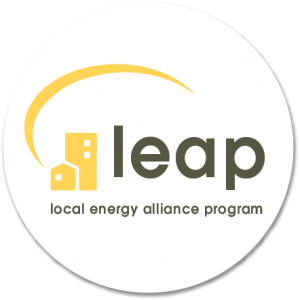 implement energy efficient technologies in buildings to promote cost savings for families and businesses, job creation, energy self-reliance, local economic development, and the mitigation of climate change. LEAP’s alliance model is a community-based, public-private partnership.
implement energy efficient technologies in buildings to promote cost savings for families and businesses, job creation, energy self-reliance, local economic development, and the mitigation of climate change. LEAP’s alliance model is a community-based, public-private partnership.
 Our November 12th member meeting was the most well attended meeting for the VAEEC to date, and those 110+ attendees were treated to a packed room and packed agenda. It was a great starting point for me as the new Executive Director of the VAEEC, and I hope that those in attendance enjoyed the diverse speaking topics as much as I did. (If you attended the meeting and would like to share your feedback, we’ve got a brief survey up online.)
Our November 12th member meeting was the most well attended meeting for the VAEEC to date, and those 110+ attendees were treated to a packed room and packed agenda. It was a great starting point for me as the new Executive Director of the VAEEC, and I hope that those in attendance enjoyed the diverse speaking topics as much as I did. (If you attended the meeting and would like to share your feedback, we’ve got a brief survey up online.) Our first speaker was Dr. Bob Holsworth with DecideSmart, who discussed the impacts of recent election results on Virginia’s energy efficient future, which, according to Dr. Holsworth, will have zero impact since the elections kept the House and Senate divided in the same ratio as before.
Our first speaker was Dr. Bob Holsworth with DecideSmart, who discussed the impacts of recent election results on Virginia’s energy efficient future, which, according to Dr. Holsworth, will have zero impact since the elections kept the House and Senate divided in the same ratio as before. After lunch, VAEEC board member Marisa Uchin with Opower presented on energy efficiency policies and programs taking place in New York and California. Hurricane Sandy was a wake up call to decision-makers in NY on just how vulnerable their energy system is to natural disasters. As stated in Marisa’s presentation, Reforming the Energy Vision is a “comprehensive reform aimed at reorienting the electric industry and ratemaking paradigm toward a customer-centric approach, and one that uses distributed energy resources (DER) as a primary tool in the planning and operation of efficient and resilient electric distribution systems.”
After lunch, VAEEC board member Marisa Uchin with Opower presented on energy efficiency policies and programs taking place in New York and California. Hurricane Sandy was a wake up call to decision-makers in NY on just how vulnerable their energy system is to natural disasters. As stated in Marisa’s presentation, Reforming the Energy Vision is a “comprehensive reform aimed at reorienting the electric industry and ratemaking paradigm toward a customer-centric approach, and one that uses distributed energy resources (DER) as a primary tool in the planning and operation of efficient and resilient electric distribution systems.”

